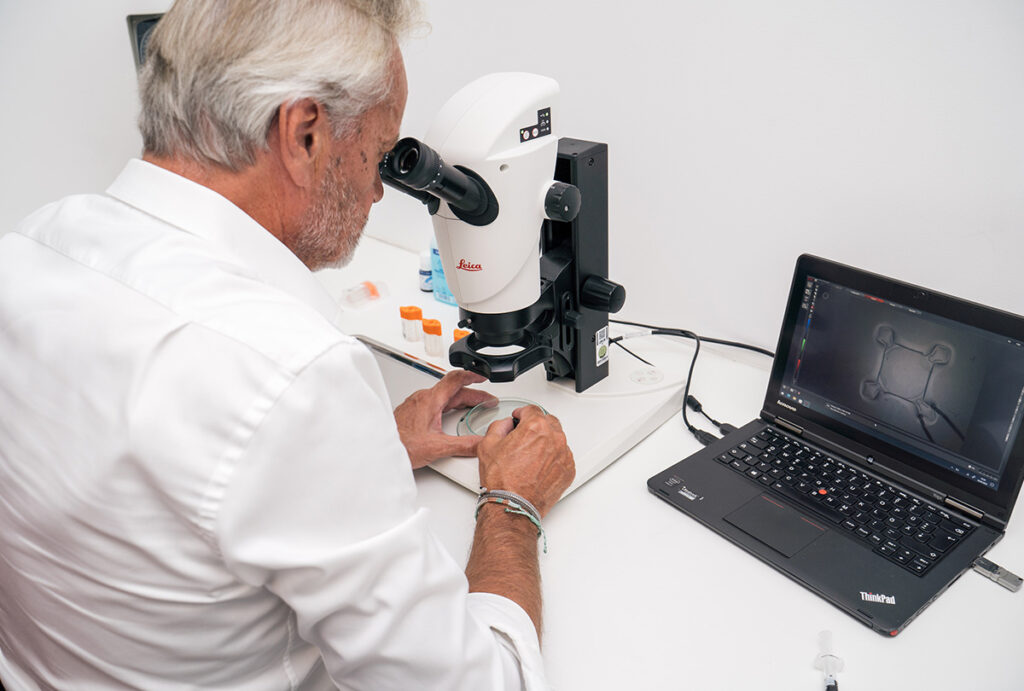New study focuses on the impact of the AddOn® IOL on astigmatism
A newly released study on supplementary IOLs by Dr. Kjell Gunnar Gundersen evaluates the clinical performance of the 1stQ AddOn being used for the correction of residual astigmatism after cataract surgery.

A newly released study on supplementary IOLs by Dr. Kjell Gunnar Gundersen evaluates the clinical performance of the 1stQ AddOn being used for the correction of residual astigmatism after cataract surgery. To date, this is one of the most relevant publications for surgeons who are looking for lens-based alternatives to laser vision correction after cataract surgery.
40% of patients could be followed up for more than three years and important findings regarding the long-term safety and stability of the 1stQ AddOn were put forward.
Effective Astigmatism Correction
Mean residual refractive astigmatism was significantly reduced (p < 0.001).
Sixteen of 18 eyes (89%) had residual refractive astigmatism ≤0.50 D, and no eye had more than 0.75 D after secondary IOL implantation (100%).
Excellent distance vision achieved, without the need for further correction.
Mean UCVA was 0.00 ± 0.03 logMAR, with no eyes worse than 0.10.
Mean CDVA was −0.05 ± 0.03 logMAR (20/20+2), with all eyes having CDVA of at least 0.00 logMAR.
High rotational stability during the whole investigated period.
The mean change in orientation, compared to the surgical IOL-position was near zero, with a mean absolute change of 4.9° ± 3.7°.
This confirms a remarkably higher stability than that reported on another, widely used astigmatism-correcting sulcus lens (17°).
Safety
Easy and accurate positioning.
No 1stQ Toric IOLs (0%) in the current study needed repositioning, compared to 62% for the most widely used sulcus lens in a previous study, and 25% for another supplementary IOL which is no longer on the market.
Stable intraocular pressure.
No statistically significant difference in the IOP before and after the secondary IOL implantation could be measured. All eyes had an IOP in the physiological range (≤20 mmHg) at the postoperative diagnostic visit.
No complications related to the secondary IOL implantation.
The absence of interlenticular opacification and pigment dispersion in any of the eyes examined indicates that the IOL design is well suited for sulcus implantation.
There was also no material change in the IOP in any eye.
In conclusion, the study of Dr. Gundersen is one of the largest published data to evaluate toric supplementary IOLs for the Sulcus based correction of residual Astigmatism.
The 1stQ AddOn toric intraocular lenses offer a safe and efficient option for pseudophakic patients to effectively reduce their residual astigmatism and thereby increase visual quality after cataract surgery.
The study „Refractive and Visual Outcomes After Implantation of a Secondary Toric Sulcus Intraocular Lenses“ was published in the Clinical Ophthalmology Journal 2020:14.

 IOL-Experience
IOL-Experience Technologien
Technologien IOL-Kalkulatoren
IOL-Kalkulatoren Service & Handhabung
Service & Handhabung 1stQ Academy
1stQ Academy Nachhaltigkeit
Nachhaltigkeit Kongresse und Events
Kongresse und Events Downloadportal
Downloadportal

